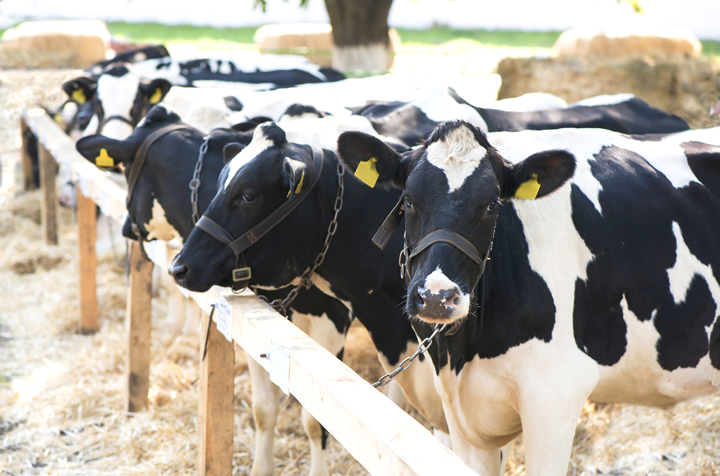What Is Traceability and Can We Make It a Reality for Livestock?

Traceability is a crucial component of livestock disease management. It’s the ability to verify where animals have traveled and when, helping producers know where diseased or at-risk livestock is located. Traceability determines if a disease is foreign or endemic. Ranchers have long relied on the classic metal or plastic ear tag for tracking purposes, but new technology has expanded traceability efforts to include electronic IDs.
Modern Livestock Traceability
In its most basic form, traceability involves thorough recordkeeping. Slaughterhouses need proof that animals are healthy, because selling infected meat may lead to a disease outbreak or lawsuit. Additionally, discerning consumers are showing renewed interest in the origin of their food, so traceability may help with marketing efforts.
Traceability helps verify credence attributes. These are any qualities a person cannot observe just by looking at a product, such as its origin or health status. Traceability confirms attributes like where an animal came from, whether it was vaccinated, its age, its breed and whether it ever got sick.
Only 28% of countries affiliated with the World Organization for Animal Health maintain animal traceability records. Currently, most livestock disease tracing is carried out via:
- Disease records, such as tuberculosis test forms or brucellosis vaccination records
- Ear tags
- Market records and brand inspection records
- Electronic or handwritten veterinary inspection certificates
While these methods are helpful, they’re subject to recording errors and lack of compliance. It can take weeks or months to complete a disease investigation.
That’s where new technology comes into play. There are several tracking methods for disease traceability, including:
- Cellular-based tracking: The most common and easy method to deploy, a collar attachment with double A batteries can work for years as long as it receives cell service.
- Satellite tracking: Providing global coverage for several years, solar-powered ear tags can help ranchers track their livestock in real time.
- LoRaWAN tracking: GPS-powered sensors transmit geolocation data in the form of a collar attachment with double A batteries.
These radiofrequency devices allow producers to manage their livestock in real time. If an individual wanders away from the herd or doesn’t move for long periods of time, producers can quickly take note and isolate the diseased animal. IoT-connected tracking devices can aggregate large amounts of data and let ranchers view behavior trends.
USDA Traceability Goals
The United States Department of Agriculture (USDA) is interested in using electronic tracking systems. It outlines several goals for livestock producers, including:
- Using electronic tags for animals that require individual identification
- Advancing the practice of electronic data sharing between state and federal animal health officials, industries and veterinarians
- Improving the ability to track animals from birth to slaughter by connecting tracking points
- Create a system where private veterinarians can easily transfer animal health certificates to state health officials
Overall, the USDA’s goal is to create a system that can catch and eliminate disease outbreaks quickly.
Improving Compliance
Although livestock agriculture supports over a billion people, in many places, there is no mandate that animals must have ID tags. Animals only have to be identified before moving across state or international borders. Traceability mandates aren’t ideal — they can create frustration and resentment, leading to deliberate non-compliance. But, for traceability to work, participation is key.
Traceability isn’t free. The cost of tagging livestock, purchasing tracking software and managing health records from birth to slaughter can add up quickly. Therefore, a traceability system must provide significant value for producers to participate in it.
The public incentive to have traceability is larger than the incentives for producers to participate. In other words, the entire public benefits from food safety, but livestock producers are solely responsible for the work and cost involved in carrying it out. Why should they?
Most producers won’t use radiofrequency ID tags unless they can recover the cost. Bringing down the cost of ID tags is a good first step. Additionally, the government should design programs to incentivize traceability. For example, subsidizing ID tags and tracking software or providing tax breaks for using them may encourage people to participate.
Technology Is Changing Traceability
The prompt containment of disease outbreaks is crucial for agriculture. It ensures food security, animal well-being, human health and economic security.
When it comes to traceability, there’s no single program that will work for every country. Disease surveillance, control and eradication are the overarching goals, but producers will take different approaches to getting there. The advent of radiofrequency ID tags will likely make traceability easier. It’s only a matter of time before these tags are affordable enough to be mainstream, so governments should start encouraging ranchers to use them.
Comments (0)
This post does not have any comments. Be the first to leave a comment below.
Featured Product

